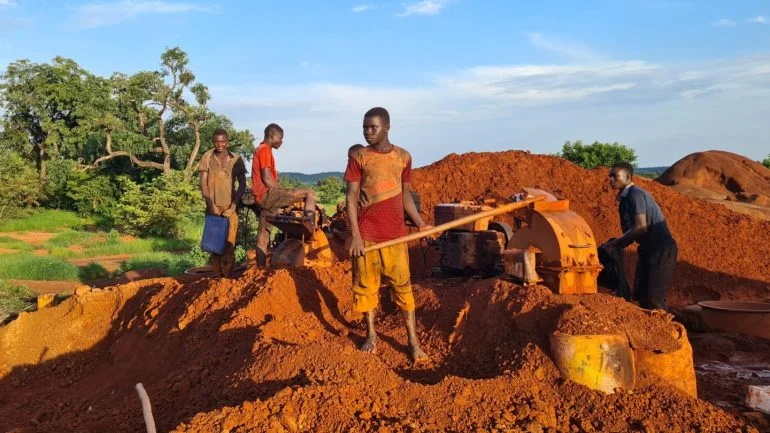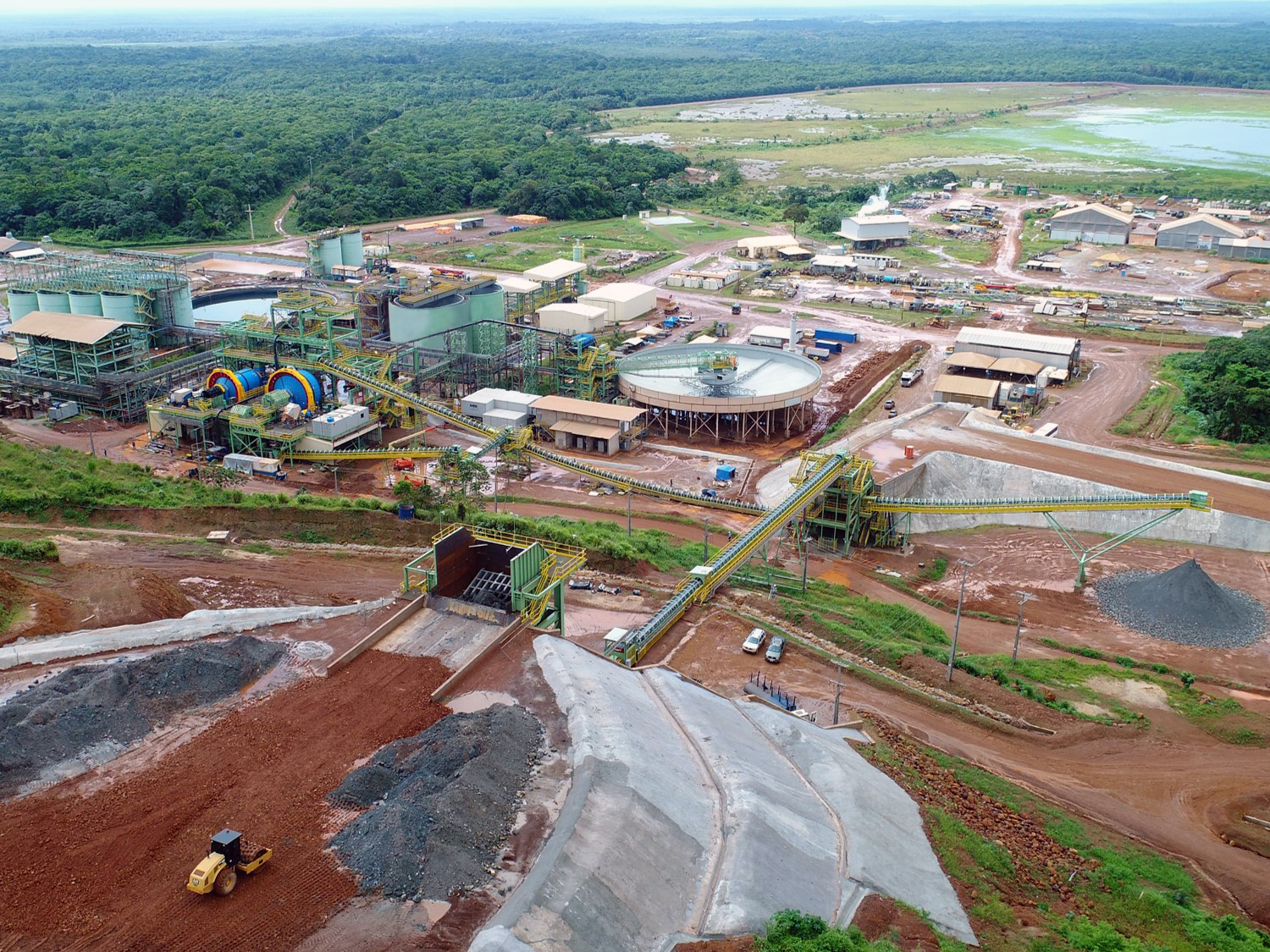Gold mining’s potential in West Africa
Global gold prices are surging, surpassing $2,700/oz this month, already up by more than a fifth compared with 2023.
In this landscape, gold hubs across the world are working to formalise their mining sectors, capitalising on the rising demand and boosting investments, driven, a GlobalData report says, by “growing demand for safe-haven assets”.
A large proportion of production is centred in West Africa, particularly in the ‘Birimian belt’, which includes Ghana, the Ivory Coast, Burkina Faso and the Mali-Senegal border. Rich gold reserves in these West African nations have long attracted investment; however, the sector’s development has been hobbled by ongoing political instability and illegal mining activities – particularly in Burkina Faso and Mali – meaning development is often curtailed before governments can reap the full benefits.
The development of a robust and transparent gold sector could have transformative impacts for West Africa’s socioeconomic landscape. It could also put the region in good stead for expanding to explore other metals. However, greater stability is needed before international investment can be relied on and before illegal mining activities can be expected to die down.
Gold mining in West Africa
GlobalData figures estimate gold production in West Africa reached 11.83 million ounces (moz) in 2024, with Ghana, Burkina Faso and Mali emerging as the main contributors to this figure. These nations have also made the news lately with government action to regain control over supply chains.
For instance, in September, Ghana’s government announced plans to commission its first greenfield gold mine since 2013. The mine, Cardinal Namdini, is due to be commissioned in November 2024 and is expected to produce more than 350,000oz of gold per annum. The country also launched its first commercial gold refinery this year.
We are confident about the unique quality of our Company Profiles. However, we want you to make the most beneficial decision for your business, so we offer a free sample that you can download by submitting the below form.
In August, Burkina Faso’s Government also made headlines with its deal to regain control of the Wahgnion and Boungou mines outside of Ouagadougou, following a legal dispute between Endeavour Mining and Lilium Mining. This signalled a renewed push for governments in the region to regain control over their own resources.
This focus can also be seen in regulatory action. Last year the Government of Mali adopted new mining codes to limit tax breaks and ensure it receives a greater proportion of profits from its mines, expanding government and locals’ engagement in mineral projects.
“West African countries are actively modernising their mining sectors,” explains Vinneth Bajaj, senior mining analyst at GlobalData. “They are enacting comprehensive laws and regulations to govern exploration, operations and environmental standards, and offering attractive incentives, including tax breaks and streamlined administrative processes, to encourage foreign investment in the mining sector.”
Yet despite this seemingly positive outlook, production of the metal is projected to decline by more than 1% between 2025 and 2030, with political instability and illegal mining activities proving a deterrent to investors despite the region’s mineral wealth.
Barriers to mine development
Theo Yameogo, EY Americas’ metals and mining leader, says the influence of the West Africa region’s geopolitics on investor decisions cannot be underestimated.
“When you look at Ghana and the Ivory Coast, which have more rule of law, proper government, etc, they will attract more capital because it is safer, but in Burkina and Mali, there is a lot of instability in terms of terrorism and coups,” he says. “Essentially, in countries where the government runs on a military, populist model, it makes illegal mining an almost de facto encouragement, and that is scary for mining companies.”
Jorden de Haan, senior technical manager of responsible mining at human development non-profit Pact, explains that in these West African countries smuggling is a huge problem, with more than 90% of gold currently being smuggled.
“This is sad for several reasons,” he states. “It means the government’s missing out on taxes, [and] they are missing out on strengthening local currency to improve the exchange rates.
“You also have the risk of money laundering or terrorism financing – in Burkina Faso, Niger and also Northern Mali there’s documentation of non-state groups including terrorist organisations using gold mining to finance their activities.”
In this environment, these nations are facing a catch-22. Without a stable environment, investor interest cannot be expected to grow. However, without proper investment it will be difficult to build up the industry and bring unformalised workers into a regulated framework.
While manufacturing political stability is impossible, some have pointed to formalising the region’s vast numbers of small-scale miners as a potential route to stabilising the industry.
Small-scale and artisanal mining in Africa
According to an EY report, artisanal and small-scale (ASM) miners make up 20% of global gold supply each year, with this figure rising to almost half when looking specifically at West Africa. According to Ghana’s Minerals Commission, ASM made up 30% of its gold production in 2020.
While the type of mining ASM encompasses varies greatly, it is generally understood to mean those that operate outside of the industrial mining framework, either with some mechanised equipment (small scale), or using more rudimentary methods (artisanal).
“ASM gold mining in West Africa is absolutely huge, and it ranges a lot,” notes de Haan. “It ranges from women loosely organised into small groups panning for gold in a riverbed, to full-blown, small-scale mechanised operations.”
Yet despite its scale and importance, most of the ASM sector operates in unregulated conditions, meaning workers are excluded from the financial and safety benefits of industrial practice, and the government misses out on profits these workers could bring.
Crucially, while this type of mining is not necessarily illegal, its exclusion from regulatory frameworks makes it easier for illicit activities to occur. As such, formalisation could curtail some of these activities and enable a more sustainable industry.
Steps towards formalising the ASM sector
While promising, the process of formalisation is complicated and multifaceted.
“Many countries have tried to formalise artisanal mining – it sounds good but it is very hard to get done,” says Yameogo. “There are structural issues that need to be considered – high unemployment, lack of access to food. How are you going to implement rules and regulations when people don’t even have enough to eat?
“Maybe it is about governments helping them to be professional miners, equipping them with tools, helping gain access to land. If we were to give people access to a decent livelihood, will illegal mining stop? That is the question, but the solution is not a straightforward one.”
Similarly, de Haan says formalisation is not a “silver bullet”.
“There are reasons why a lot of times things that are branded as formalisation fail, because they do not account for the complexity of all these things,” he says. “It has legal dimensions, institutional dimensions, it requires coordination between government departments and the establishment of decentralised mine offices at the regional level.
“We are certainly seeing more of a global consensus that formalisation should be prioritised; however, whether regulatory frameworks are really adapted to local nuances and whether land is prioritised for artisanal instead of industrial miners is another matter.”
Building up the mining industry in West Africa
With the path to formalisation a long one, attention could instead be turned to building up the region’s industrial mining industry – providing a viable alternative for ASM workers.
According to Yameogo, establishing more large-scale mines in the region could help channel money back to governments and communities, raising the quality of life and incentivising people to abandon illegal methods for the traditional industry.
“If gold mining is set up sustainably, it would be a massive game changer for communities in West Africa,” he explains. “It may not stop illegal mining completely, but raising people above the poverty line could have a significant effect in reducing it. In this view of industrial gold mining, it is the gateway to an industrialised world.”
With its vast mineral wealth, there is no doubt that West Africa will remain a key player in the global gold industry in the coming years, and upcoming mines in the region are set to keep production levels high.
However, while illegal mining remains the norm there is a limit to how much the mining industry can develop (in gold and beyond).
Suggested solutions vary from increased investment in local expertise, to support for ASM workers and increased regulatory transparency. While there is no single answer, it is clear that continued work is needed to bring these nations further into industrialised operation and to protect unregulated workers if the mining sector’s true benefits are to be seen in West Africa
Share this content:














